ANEW PERSPECTIVE



Copyright ©2022 Adelson Galleries, Inc.
Front & back covers: Patrick’s Palazzi (detail), 2022 Oil on board construction 26 x 58 x 8 inches
If art can be a catalyst for improving our daily lives, it may do so by altering our perspective on reality in a way that makes us smile. Patrick Hughes accomplishes this with every person that encounters his work. Upon glancing at each painting, there is something familiar, whether it is a recognizable artwork, architecture, or landscape within the composition. Then suddenly, the passing observer of the work becomes an active participant, and their world is spun around as they move and see the room or objects spin with them. Our eyes seem to deceive the rational side of our minds. That moment of discovery inspires the accomplice to question basic laws of physics. Invariably, the inquisitive smile emerges as the artist’s formula for the optical effect comes into focus. Upon discovery of the artist’s technique, our participant will then test the limits of the illusion – walking back and forth, side to side, and inviting others to witness the visual effect.
I have found that the excitement of my initial discovery of each of Patrick Hughes’ works does not fade over time. Each are like songs that I want to play back again, and each day it feels new. It’s hard to understand this phenomenon until you’ve lived with one in your home long enough. The board constructions do not fade into the background quite the same as other paintings on the wall. They are not like the passive paintings we forget about, then remember when we have company over. Whenever I walk by my Hughes, I’m confronted by it. Watching a bit of my wall spin at a different velocity than my body elicits a playful cognitive response that resets my train of thought. I’m brought back to being an adolescent, discovering an anomaly and finding joy in the world’s curiosities.
If Patrick’s works are like songs, then each one has its own melody. For that reason, I find Hughes’ gallery exhibitions notably different than seeing one by itself in a private home. In a gallery or museum exhibition, it is like a concert. Each requiring its own time and space to absorb its full effect. If you allow your eyes to focus on
two or three on one wall at the same time, one has the feeling of being on a carnival ride, going around and around without really being able to focus on any one point. It is enjoyable and dizzying, and the passenger is acutely aware that they are at a show. In a more intimate setting, the works become part of the environment. The edges of the painting become extensions of the surrounding walls. In many cases, the paintings become the central focus of the room, defining the bedroom or hotel lobby or office. At other times, it is a point of interest as you cross the threshold from one room to another. Wherever we encounter these three-dimensional works, we tune into the rhythm of the painting and tune out the reality of our other surroundings.
On behalf of everyone at Adelson Galleries, we are delighted to exhibit a group of Patrick Hughes’ work at our New York gallery for the first time. The gallery has featured his paintings, one or two at a time for the past three years, so it is exciting for us to have the opportunity to fill our gallery with a variety of these multi-faceted works. This exhibition exemplifies the artist’s array of subject matter: from Venetian scenes to complex interiors and still lives. Apart from one painting made in the late 1990s, the exhibition is primarily composed of new Reverspective paintings to be exhibited for the first time. We will also include a handful of Hughes’ collaged paintings and multiples. The show will be Patrick’s first solo-exhibition in New York since 2017, so we hope to bring joy to the city which has endured so much in the past few years.
Adam Adelson Executive Director, Adelson GalleriesAt the age of three or four, whilst staying at his grand-parents’ house in Warmingham Road, Crewe, Patrick Hughes would sleep in ‘The Glory Hole’ – the cupboard under the stairs. Lying awake listening to the air-raid sirens and falling bombs of the Second World War, Patrick would look up and stare at the stairs, “I was looking up at these stairs the wrong way round – stairs that only a spider could walk up. It must have made a strong impression: being bombed and in the dark and seeing everything the wrong way round.” He has made a life-long career out of doing things the other way round.
Patrick Hughes was born in October 1939 in Birmingham, the eldest son of Peter and Florence Hughes. His father was a commercial traveller in groceries, his mother a housewife. It was an unhappy household, a quarrelsome and hostile environment, and Patrick’s refuge was in books and in his imagination. The books came from the public library as his was a book-less house: “A book is a way out…” says Patrick, “…They are little doors – you open the hinged rectangle of the book and step into another world. I escaped from my suburban hell-hole of an upbringing through the book.”
At seventeen Patrick left school and home for London, never to return. He took a job as a window-dresser and salesman at Rubans de Paris in London’s Mayfair, near to the Portal Gallery. He spent his spare time reading and writing and visiting galleries, looking at works by René Magritte, Marcel Duchamp and Paul Klee. The following year, Patrick met his first wife Rennie Paterson, then an art student. During their marriage three sons, John, James and Solomon, were born.
Sticking-out Room , 1964 Mixed media 36 x 41 ¾ x 4 inches

Infinity , 1964 Painted wood 72 x 72 x 5 7/8 inches
In 1959, Patrick enrolled at the Leeds Day Training College to study literature with a view to teaching English and being a writer. On the first day at college, asked to write an essay on six books he had recently enjoyed, Patrick wrote about N. F. Simpson, Eugène Ionesco, Franz Kafka, Lewis Carroll, Samuel Butler and Christian Morgenstern. To his astonishment, the English teacher Mrs. Hanson declared this was not Literature. English literature was the nineteenth-century novelists; George Eliot, Jane Austen, the Bröntes and Charles Dickens. Mrs. Hanson suggested Patrick should study art and passed him over to the art department, and so it was that Patrick’s art career began out of rejection and suggestion, not through intention.
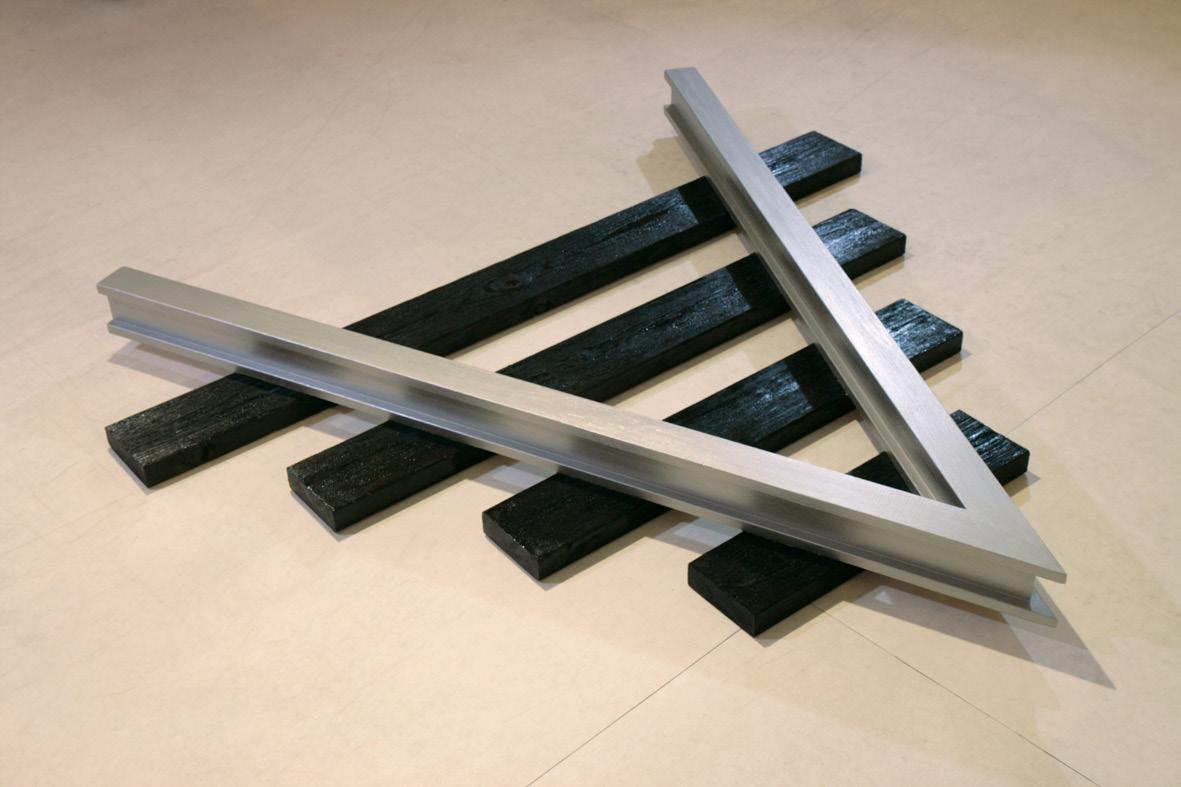
The Art Department was run by Muriel Atkinson and John Jones and welcomed and encouraged creativity and experimentation. Patrick began making low reliefs in plaster and later, cut-outs in paper and wood, using white emulsion paint as the ground and household gloss paint as the finish. It was a surprise gift from John Jones for his twenty-first birthday – a subscription to Art News and Review – that stimulated Patrick to send off slides of his work to the Portal Gallery in early 1961. On the Monday after the Friday when he completed his course at the college, Patrick opened his first solo exhibition at the Portal Gallery, London. It was the first show by an English Pop Artist.
The critics of the day, George Melly and David Sylvester, wrote the catalogue. Sylvester said, “This artist has the gift, synonymous with creativeness, of being able to be surprised by what the rest of us take for granted. Here is a painter who really has something to say, and his arrival on the scene gives me a rare sense of exhilaration.” Parallels were drawn with the works of Harold Pinter, Paul Klee, and Samuel Beckett. Patrick sold most of the paintings exhibited.
The first half of the 1970s saw Patrick living in Chelsea, London and painting rainbows. The rainbows became popular as prints and as postcards. (Over the years about 1,000,000 rainbow postcards and
Perfect Present , 1975 Oil on board construction 18 ½ x 24 ¾ x 3 ¼ inches

10,000 screenprints have been sold.) People thought the rainbows were cheerful, but Patrick felt they were misunderstood; they were acts of subversion, visual oxymorons. His interest lay in the contradiction of fixing an experience, an event, into a solid thing.
In 1975, Patrick moved to St. Ives in Cornwall and leased a studio with a ladder down to the beach. It was here he made On Reflection: St Ives Bay , which he describes as the best piece he has made about mirrors. In 1979, he left the village of St. Ives for the village of the Chelsea Hotel in New York, another artists’ colony, where he started to write More On Oxymoron . He hung out with Keith Haring, the musician Klaus Nomi, and the theatre director Charles Ludlum. These underground artists were using comedy in their work, which has been Patrick’s abiding interest.
Prison Rainbow , 1972 Oil on board construction 48 ¾ x 36 ¼ inches
In 1987, Patrick married the historian and writer, Dr. Diane Atkinson. Together they moved to 72 Great Eastern Street, East London, where they live today above his studio. Every weekday, through the large plate glass windows, Patrick can be seen with his team of studio assistants painting his reverspectives.
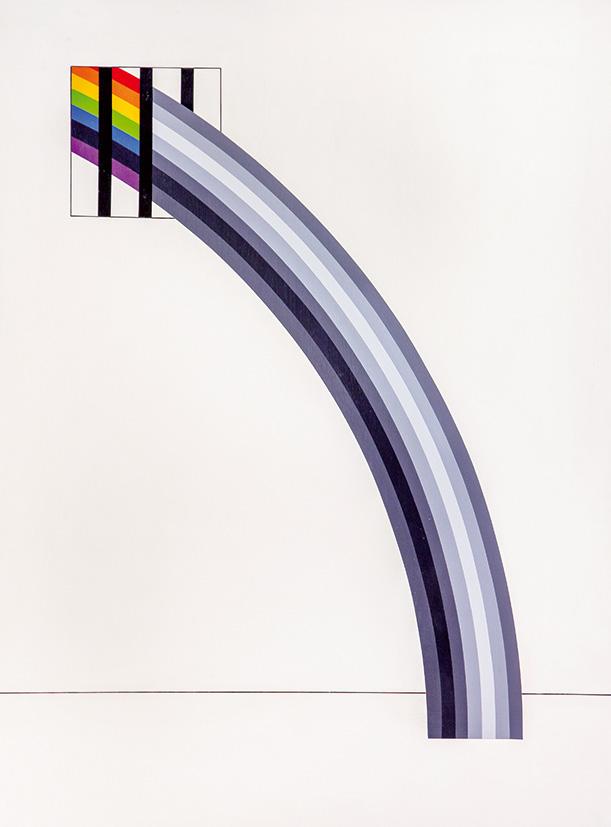
On Reflection: St Ives Bay , 1964
Oil on board construction
48 x 95 ¾ x 4 ¾ inches
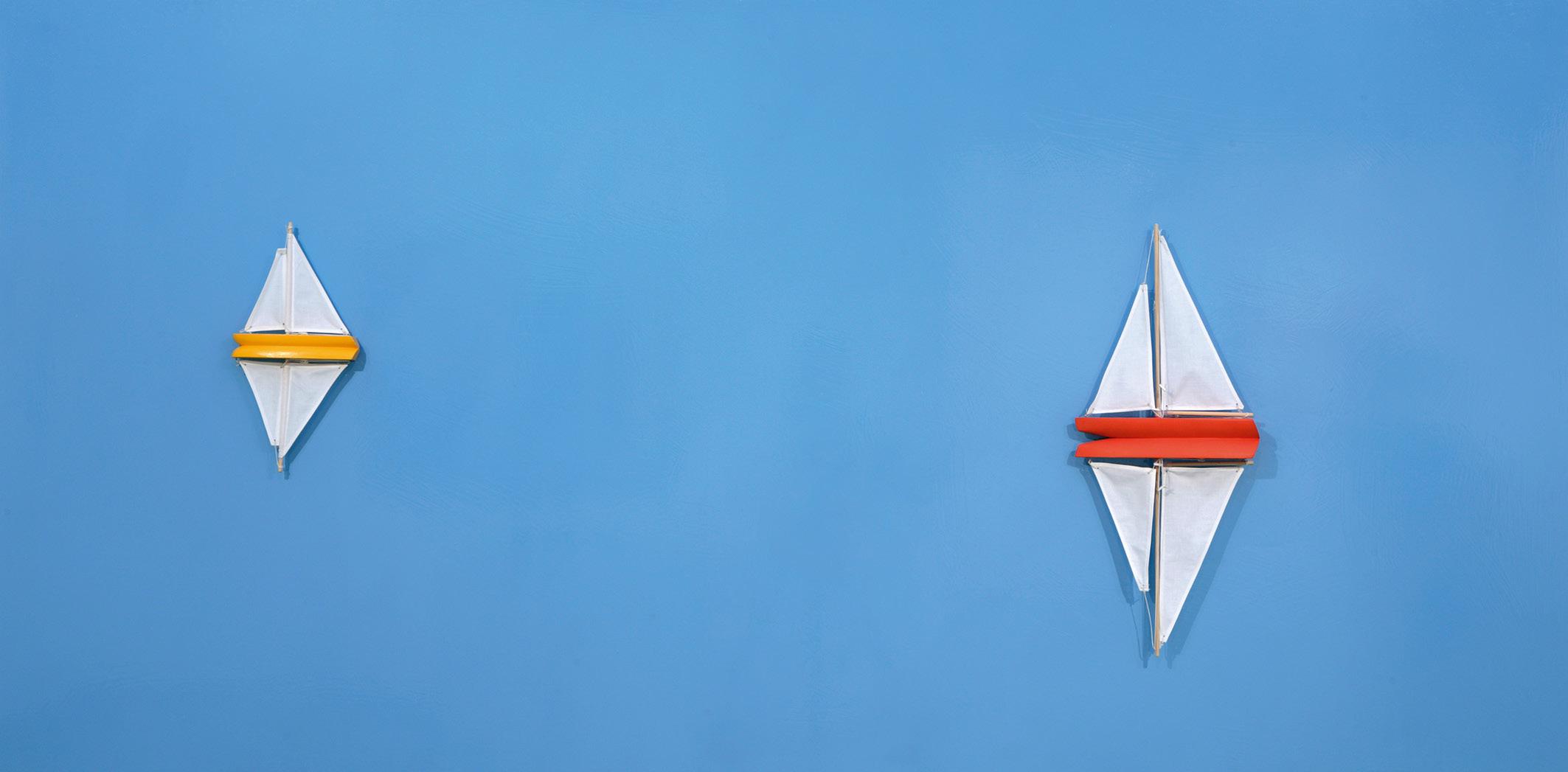
Hughes writes, “From 1959 to 1989 I spent most of my time as an artist thinking about what I should do and how I should do it; and a smaller amount of time actually doing it. When I started making the reverspectives in 1990 more time was spent doing the art, because it was more laborious to construct and paint in the illusionistic way – works could take months to make. The process changed and speeded up when I started using a computer to do the scanning and transforming. I can see now from the perspective of sixty years making art, that in the first half of my career I was interested in showing people visual paradox and contradiction, but in the second half, with my reverspective three-dimensional paintings, I encourage people to experience these paradoxes for themselves. Another way of looking at the career is that my early work was poetic and my later work sensory and theatrical.”
The University of London granted Patrick Hughes the degree of Doctor of Science in 2014 for his contribution to the study of the psychology of the perception.
Books by Patrick Hughes include:
Vicious Circles and Infinity; Upon the Pun: Dual Meaning in Words and Pictures and Paradoxymoron: Foolish Wisdom in Words and Pictures .
The artist’s work is studied in Perverspective by John Slyce (2005) and in A Newer Perspective (2018) with articles by Dawn Ades, Martin Kemp, Thomas Papathomas, Murray McDonald, and Patrick Hughes.
Public collections include:
Arts Council of Great Britain Baker Museum, Florida
Birmingham Museum and Art Gallery Museum of Fine Arts, Boston
The British Academy The British Library Denver Art Gallery Gallery of Modern Art, Glasgow Institute of Philosophy, University of London Tate, London Leeds City Art Gallery Würth Museum, Germany University of Houston Victoria and Albert Museum, London



The Fourth Dimension 2018
Oil on board construction 29 ½ x 46 x 10 inches
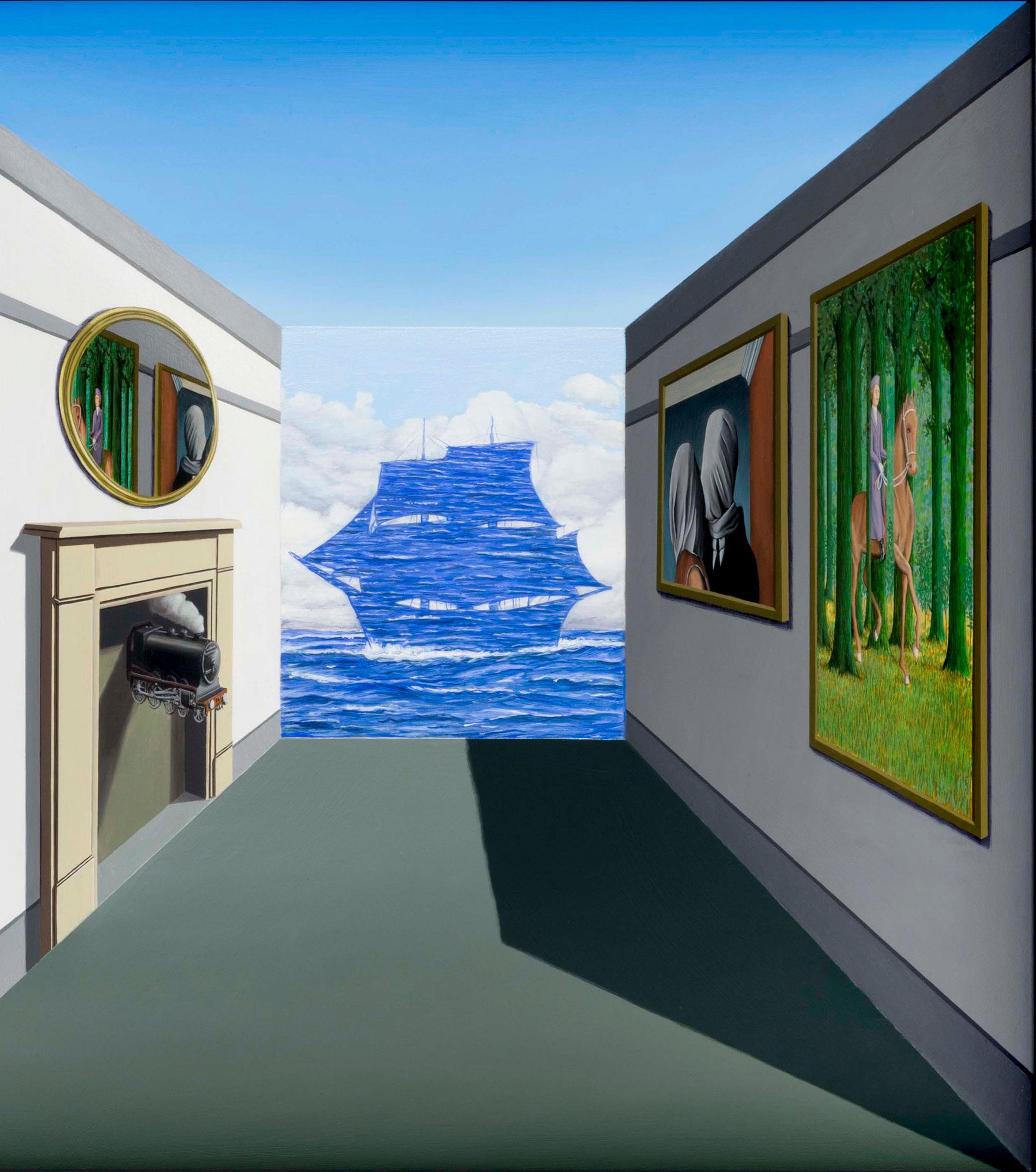

Oil on board construction 25 3/4 x 28 3/4 x 7 1/8 inches
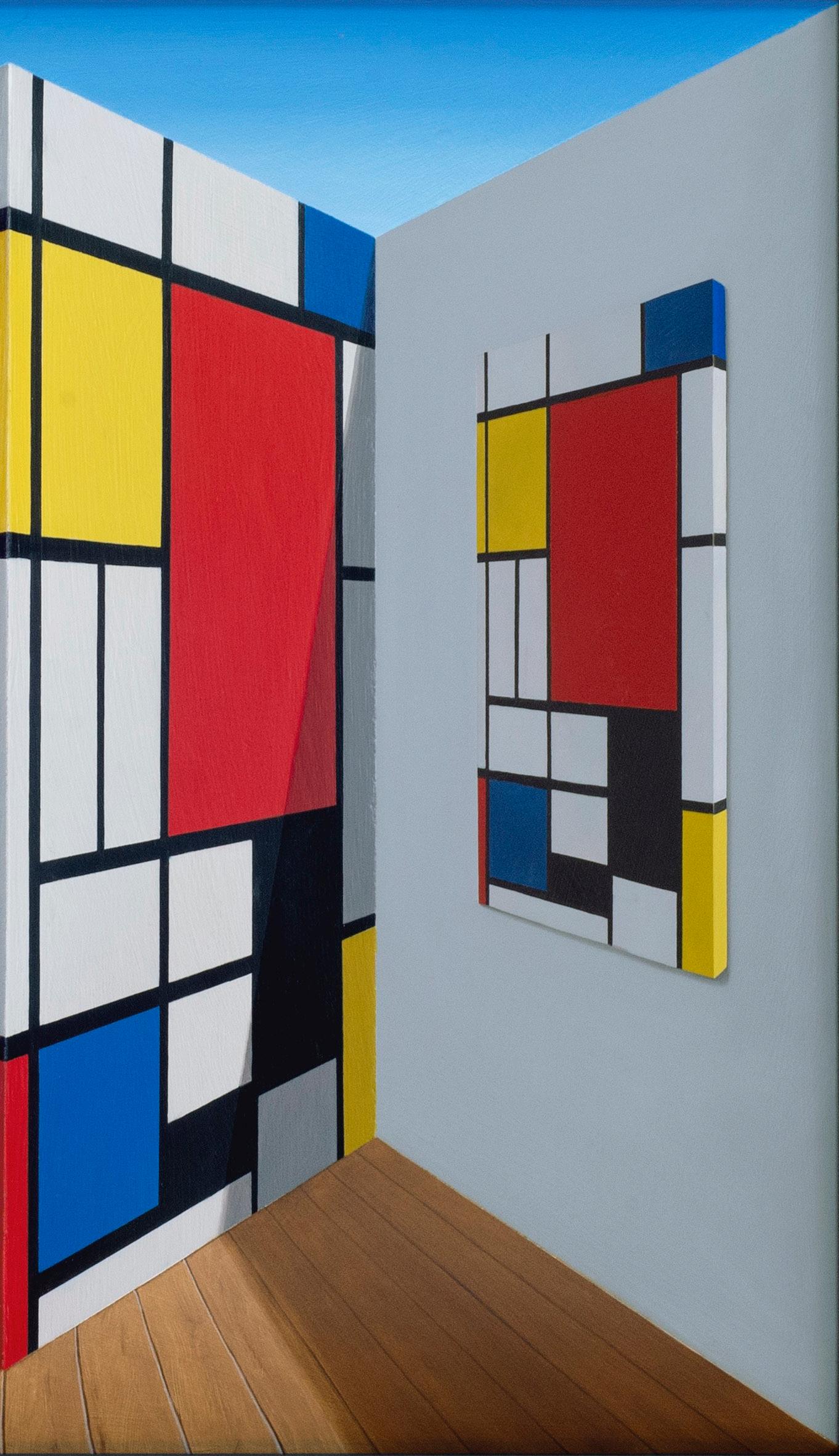

Oil on board construction 30 ¾ x 26 x 8 ¼ inches

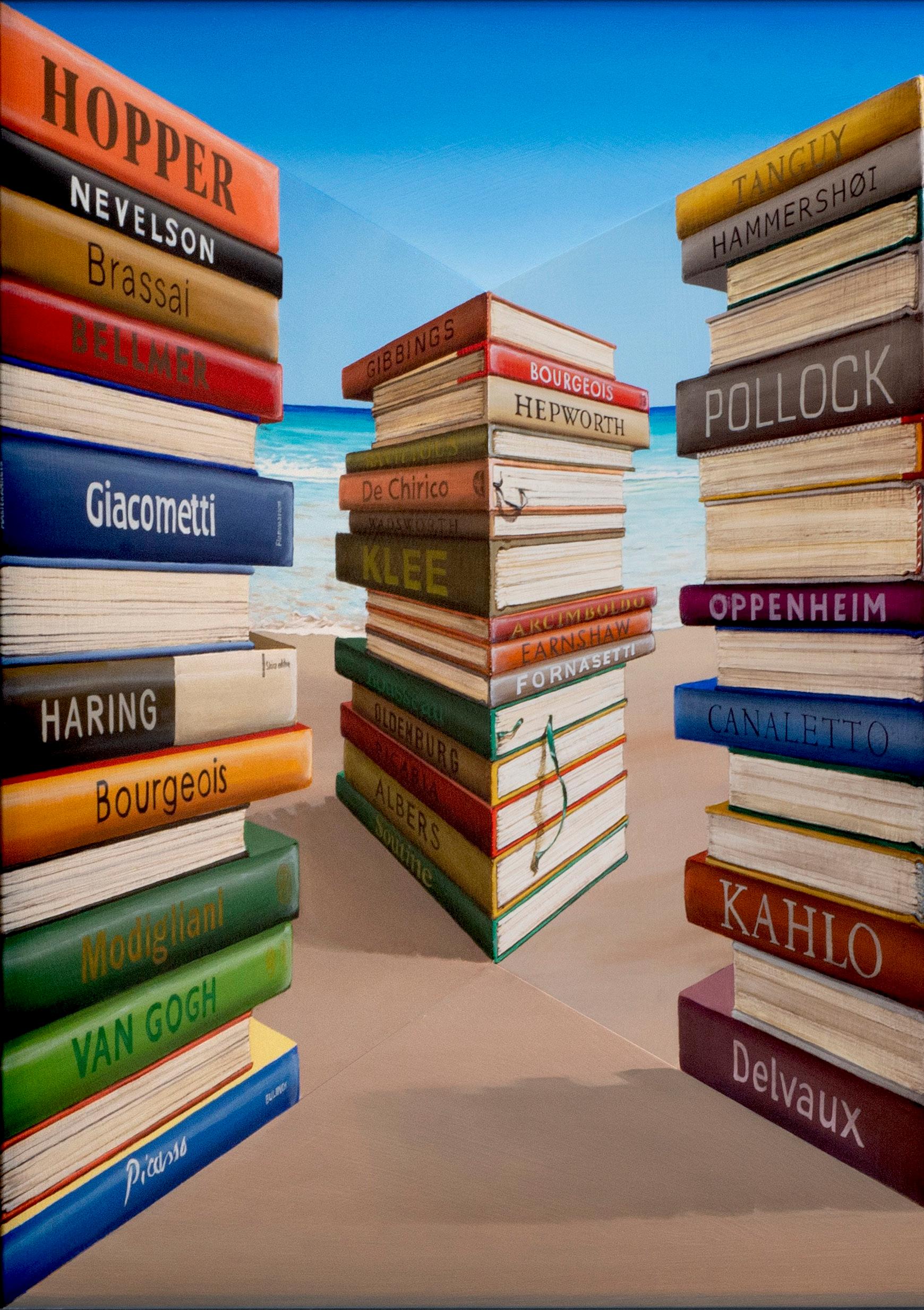


Oil on board construction 33 ¾ x 26 x 9 inches


Oil on board construction 26 ½ x 31 ¾ x 8 inches


Oil on board construction 25 ¾ x 31 x 8 ½ inches

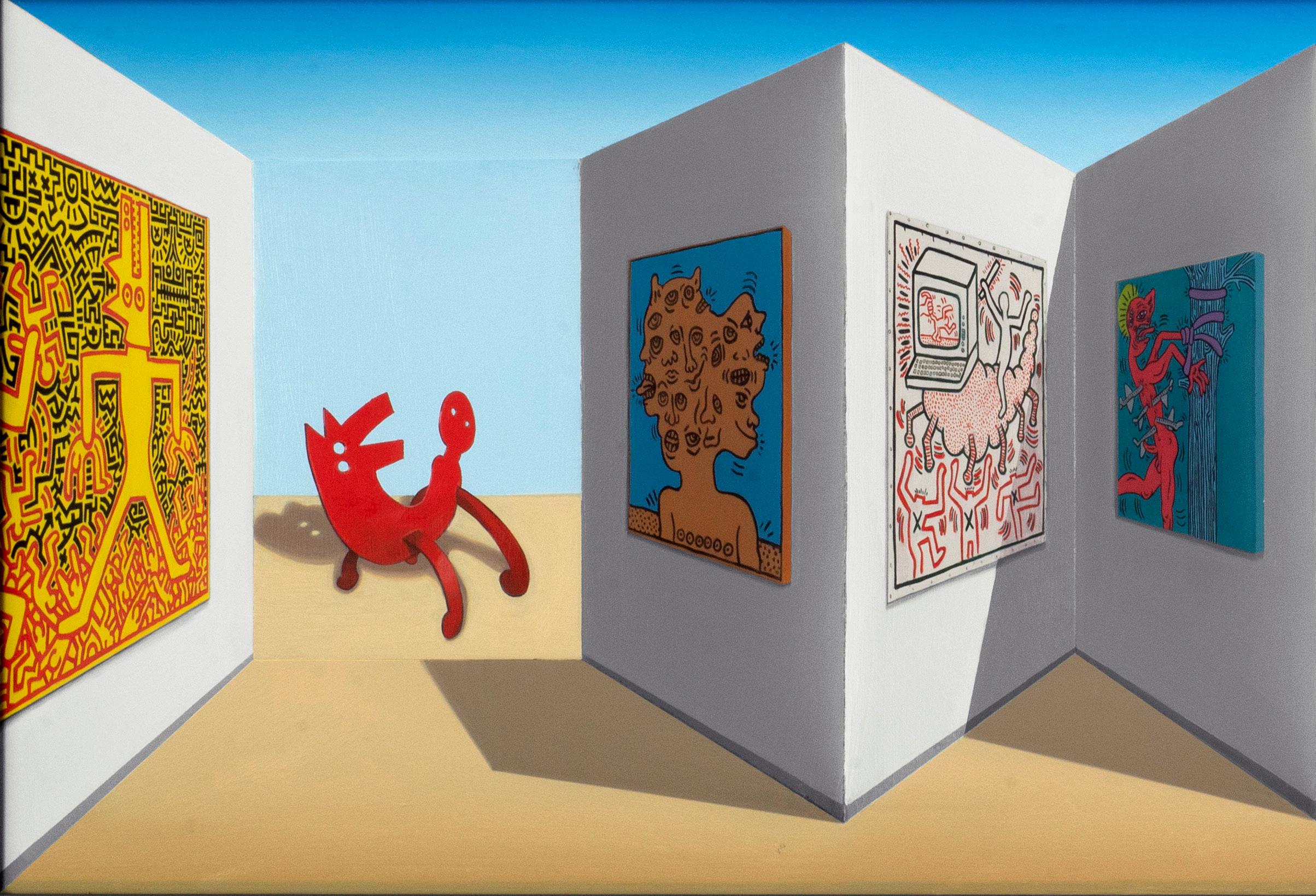

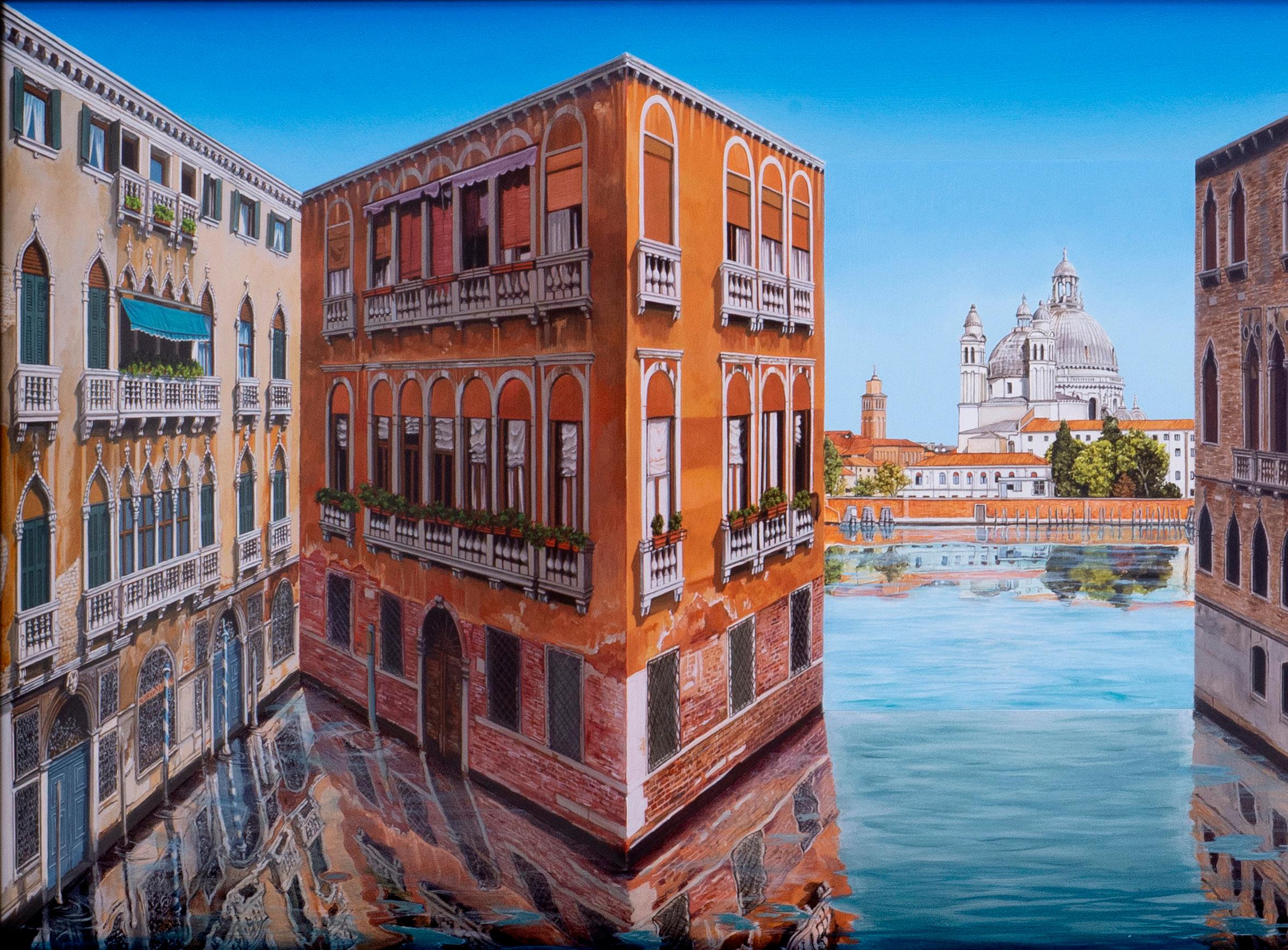

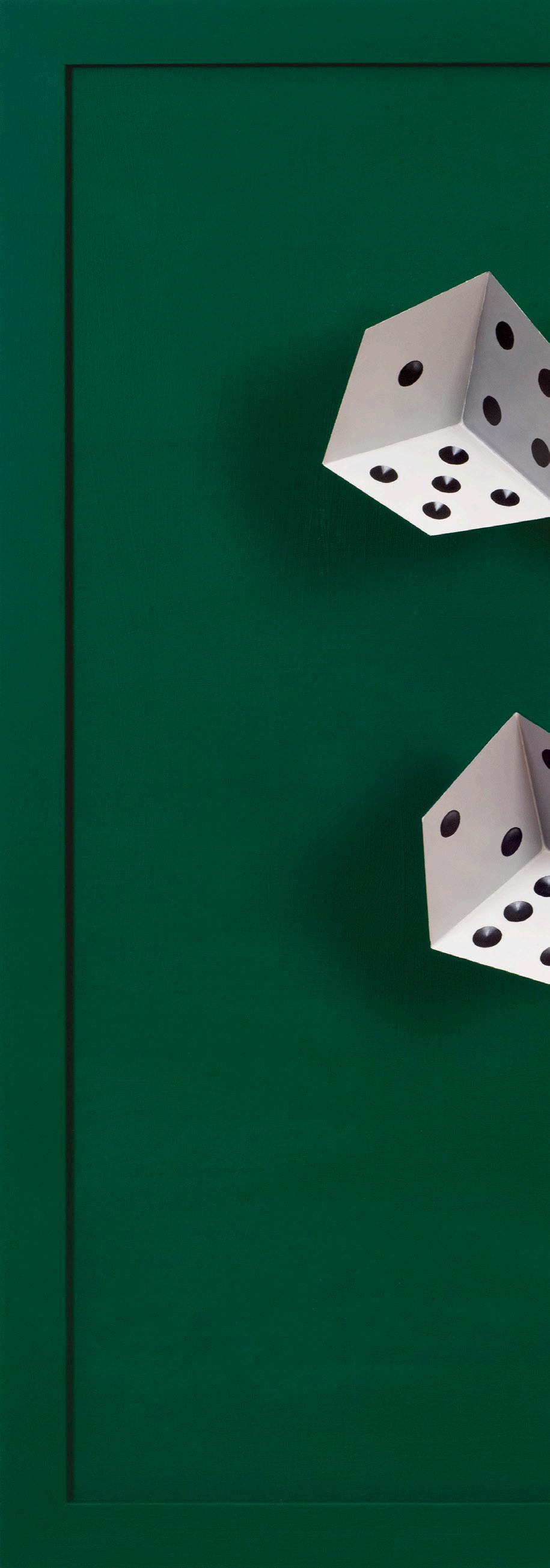
Oil on board construction 38 x 26 ½ x 6 ¼ inches


Watery World 2022
Oil on board construction 19 ½ x 21 x 6 inches


Window Shopping 2021
Collage and oil on board construction 26 ½ x 71 x 7 ½ inches


Hand-painted multiple with archival inkjet 17 ¾ x 35 ½ x 7 inches
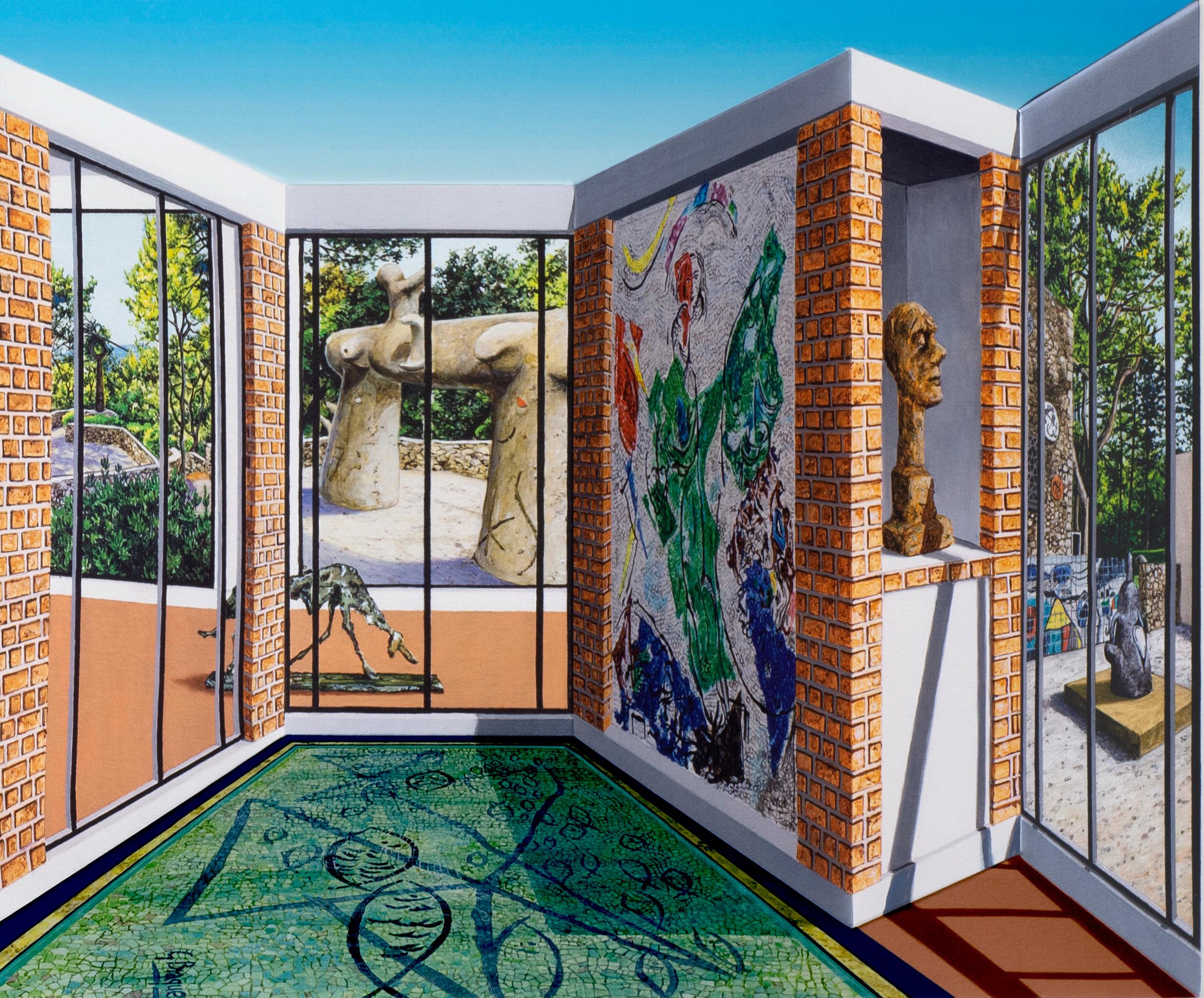

Hand-painted multiple with archival inkjet 17 ¾ x 40 x 6 ½ inches


Hand-painted multiple with archival inkjet 15 ¼ x 29 ½ x 7 ¾ inches


Hand-painted multiple with archival inkjet 15 ½ x 45 ¼ x 6 ¾ inches

FOR MORE INFORMATION, PLEASE CONTACT:
ALAN ADELSON Director, New York alan@adelsongalleries.com

GEORGIA ADELSON Gallery Manager georgia@adelsongalleries.com
The Fuller Building 595 Madison Avenue, 4 th Floor (212) 439-6800 info@adelsongalleries.com www.adelsongalleries.com